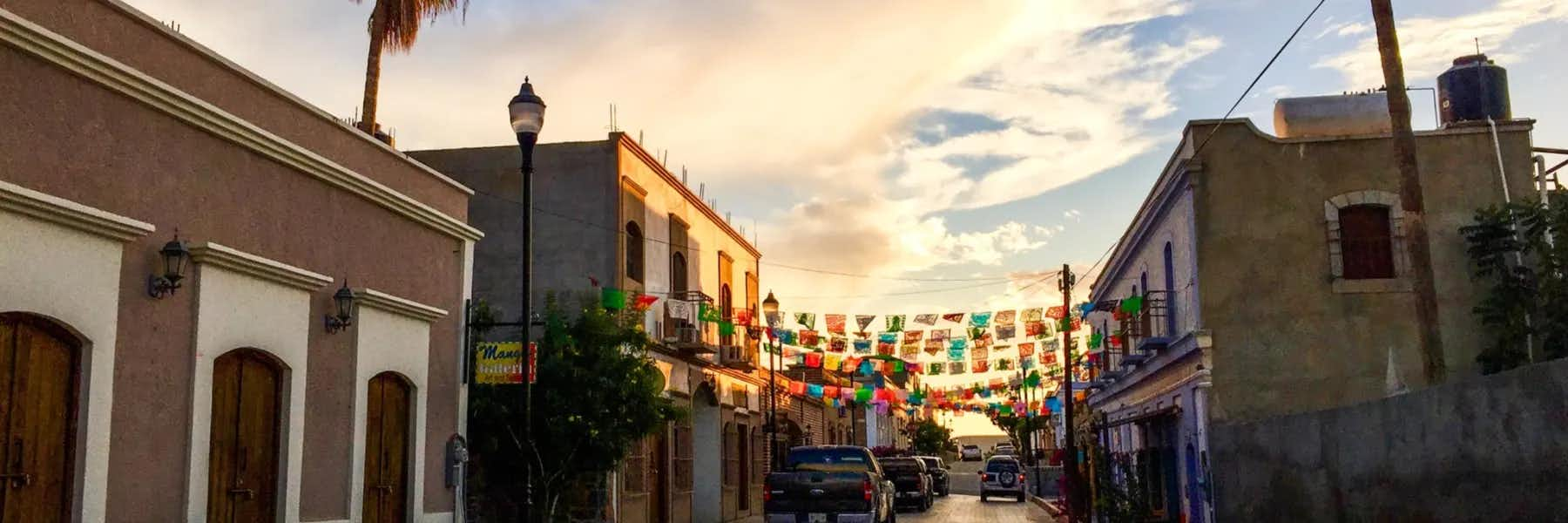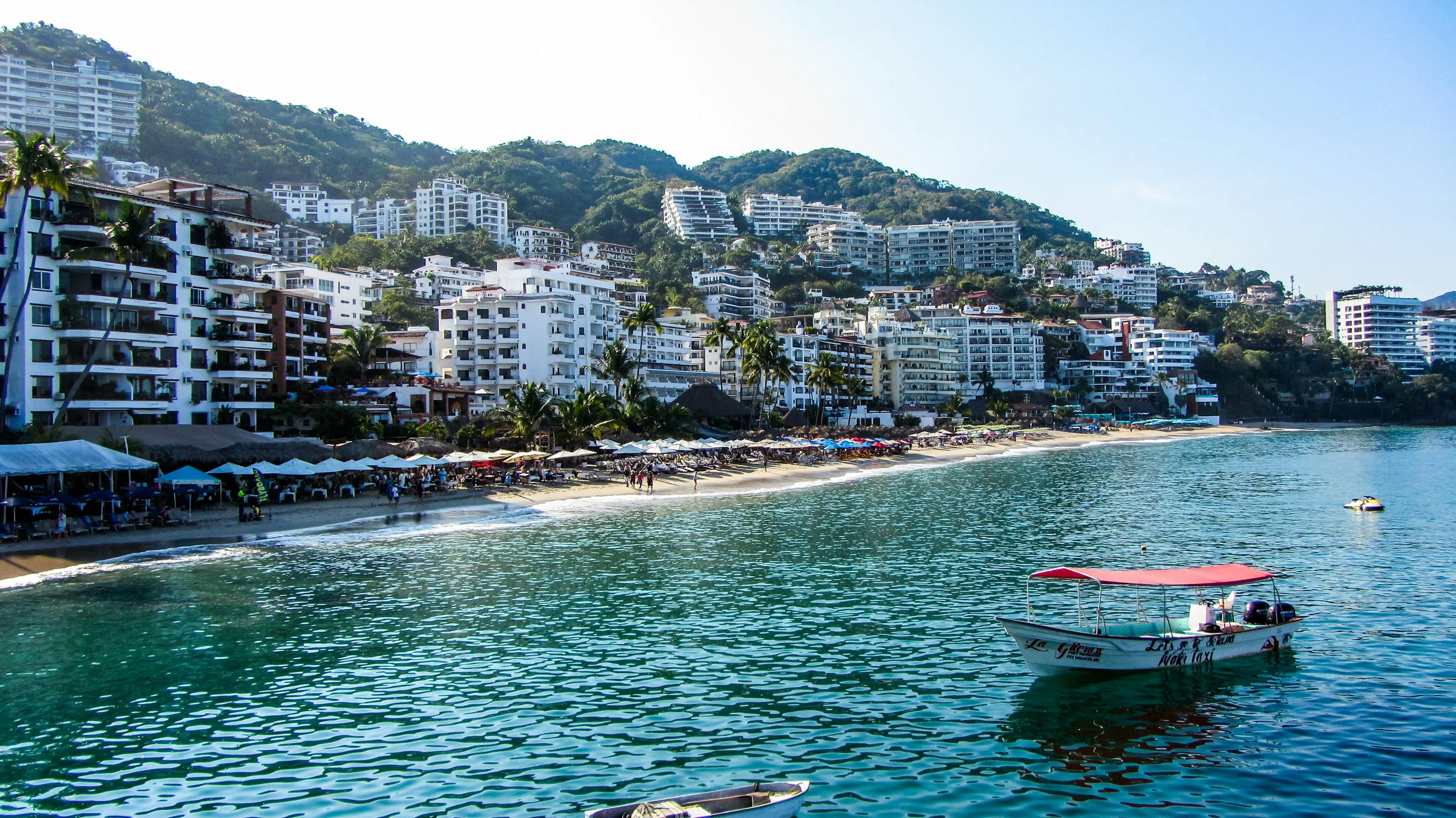Mexico has something for everyone: rustic towns and elegant resorts, sprawling beaches, world-class diving and snorkeling, lush jungles, high-altitude deserts, snow-capped mountains, and beautiful, Spanish colonial cities. Whether you like a warm climate with a constant sea breeze, a hot and dry semi-arid or desert climate, or you want to be somewhere cool enough that you’ll need to wear a jacket in the evenings year-round, Mexico offers unlimited choices.
It’s an excellent retirement destination for any budget, too—a place where you can live like a millionaire for the cost of a middle-class lifestyle at home. The quality of your life improves in Mexico. Things take longer, so you’ll learn to slow down. Goods and services cost less, so you can afford the kinds of luxuries only the very wealthy enjoy up north—like a maid, a cook, and a gardener.
And in Mexico, you have the good fortune of giving up very little when you make your move. You’re heading to a near neighbor where you can get internet, cable TV, and all the comforts you’re used to having—without needing to count your pennies.
Get Your Free Mexico Report Today!
Get Your Free Mexico Report Today!
Learn more about Mexico and other countries in our daily postcard e-letter. Simply enter your email address below and we’ll send you a free special report – Mexico: The Perfect Close-to-Home Retirement Haven.

By submitting your email address, you will receive a free subscription to IL Postcards and special offers from International Living and our affiliates. You can unsubscribe at any time, and we encourage you to read more about our Privacy Policy.
Video: Guide to the Cost of Living in Mexico
Housing
As is the case anywhere in the world, your biggest expense in Mexico will likely be housing. Though housing prices everywhere have increased in recent years, Mexico still has plenty of bargains compared to the U.S. and Canada. When it costs $200,000 for a house that you’d pay at least twice the price for back home, you’re left with savings you can spend on living well.
The cost of housing, whether you’re renting or buying, will vary greatly depending on where you want to live. Unsurprisingly, homes near the beach and in resort areas will be more expensive than those in the central highlands or localities with fewer tourists or expats, though you should be able to buy a nice house in a good neighborhood for $150,000 or less nearly anywhere in the country. Of course, you could easily spend much more—it all depends upon your lifestyle.
Modern condos with ocean views in expat-favorite Puerto Vallarta, for example, start at around $120,000, while houses a block from the beach with pools and other amenities can be found in the low $200,000s. Rentals can be surprisingly affordable; furnished, one-bedroom condos near the beach start at less than $600 per month.
You might find the colonial central highlands town of San Miguel de Allende to your liking—it’s one of the most popular expat havens in all of Mexico. Modern houses here start at around $235,000, and you’ll have access to more fine restaurants and expat-oriented activities than you could ever take advantage of. Renting is also an option; two-bedroom apartments in or within easy walking distance of the historic center range from less than $900 per month to thousands, again depending on your needs and lifestyle.
The city of Mérida, in southern Mexico’s Yucatán peninsula, has plenty of low-cost housing. Houses in the Centro Histórico sell for $100,000 or less, while you could easily find a one- or two-bedroom rental for under $600 per month. Prices are even lower in the nearby coastal town of Progreso and in the neighboring towns along the barrier islands, where beachfront condos can be rented for $500 or less per month.
The glamorous Riviera Maya, along the Caribbean coast, has long been a major expat destination. If you don’t mind living a short walk or drive from the beach, you can still find condos for less than $100,000, while units with ocean views start at around $125,000.
Even top-end luxury apartments cost less in Mexico. In Playa del Carmen, you could pay less than $1 million for an ultra-modern, 2,000-square-foot condo right on the beach. As with purchasing property, the price of rentals in the Riviera Maya will depend on location, with proximity to the beach being the most important factor. If you want to be within a five-minute walk of the beach, you’ll have your choice of condos starting at around $1,000 per month; prices drop dramatically if you don’t mind a short drive to the city or beach, or a home in one of the other beach towns along the Caribbean coast.
Property taxes are also quite low in Mexico; unless you have an exceptionally large home, your taxes will be less than $200 per year.
Food

Almost everything at the grocery store costs less in Mexico than it does in the U.S. Local products are often incredibly inexpensive, and anything that is made or grown in Mexico is likely to cost a fraction of what you would pay in your home country.
A kilogram (2.2 pounds) of Mexican avocados, for example, costs about $3.25, and a kilo of mangos costs $2.17—less than the average price of a single small mango in the U.S. A kilo of fresh tomatoes runs just over a dollar in Mexico, compared to more than three dollars per kilogram in the States.
Many imported items will cost as much, or more, than local versions of those same products. Fortunately, Mexico produces many items that are of as high a quality as what you’re used to purchasing back home. Tide laundry detergent and Charmin toilet tissue, for example, have Mexican equivalents that are perfectly fine—you probably won’t even notice the difference, aside from the much lower price of the made-in-Mexico product.
Street food and informal cafes offer some of Mexico’s best bargains. A hearty lunch at a comida corrida costs $4 to $8 per person, while dinners at most nice restaurants are $20 or less. Cervecerías, or beer halls, also offer inexpensive food—a hamburger, wings, or tacos often cost about $2. Your total bill depends on how much beer you consume, but for about $2 a glass, it’s still a bargain.
Traditional markets and specialty stores like butchers and seafood shops are not only a fun way to interact with local people, but if you know how much the big grocery stores charge, you can often get fresher food and save quite a bit by patronizing your local vendors. The local markets—not the ones where the tourists go—tend to be less expensive and it’s easy to get a fair price.
Get Your Free Mexico Report Today!
Get Your Free Mexico Report Today!
Learn more about Mexico and other countries in our daily postcard e-letter. Simply enter your email address below and we’ll send you a free special report – Mexico: The Perfect Close-to-Home Retirement Haven.

By submitting your email address, you will receive a free subscription to IL Postcards and special offers from International Living and our affiliates. You can unsubscribe at any time, and we encourage you to read more about our Privacy Policy.
Transportation
Many Mexican cities are walkable and public transport is inexpensive. Bus fares tend to run 50 to 60 cents a ride, while taxis and ride-hailing services such as Uber and DiDi generally charge only $2 to $5, depending on the distance, within most cities. In many areas, having a car is not a necessity, though many expats still like to have one. Maintenance, fuel, and insurance for one car can average about $170 a month, whereas public transportation can run less than $40, depending on how often you walk, take the bus, or depend on cabs.
Utilities
Electricity: Electricity costs will vary, depending on your use of air conditioning or space heaters. Mexico calculates the price of electricity by consumption. If you use electricity sparingly—minimal air conditioning, heating, and no electric clothes dryers or other high-wattage appliances, you may qualify for the lowest rates. Some expats pay less than $3 per month for electricity. However, if you go above the minimum threshold, the cost per kilowatt hour increases quickly. If you’re charged the top-tier rate (using considerably more electricity than the average Mexican household), you’ll be paying roughly what you would pay in a similar climate in the States. Running a space heater or air conditioning can raise costs to several multiples of what the cost per kilowatt hour would be at the lowest tier.
Gas: Propane gas is used for heating water, cooking, and possibly for a clothes dryer. In several areas of Mexico (notably the Colonial Highlands), many people install solar water heaters. A solar heater can reduce gas usage to a third or less of what it otherwise would be, resulting in annual gas costs as low as about $150 to $200 for a couple.
Internet/phone: Mexico has several providers of internet and telephone services, from phone companies to cable TV providers that also offer internet. However, the majority provider is Telmex, which offers packages for high-speed internet, plus landline service that start from as low as about $21 a month. The package guarantees 10 Mb per second for internet, and the landline service offers free long-distance calls worldwide. Telcel, the cellphone division of Telmex, offers 26-day plans of unlimited calling throughout North America and 2 Gb of data on their Sin Limite 150 prepaid plan for about $8.
Cable/Pay TV: Numerous companies in Mexico offer cable plans for between $35 to $45 a month. However, these plans offer limited English-language programming. Satellite or other TV with more English programming will be more expensive than this. Given the reliability and speed of internet in Mexico, many expats (as well as locals) view their programming via services like Netflix (a subscription runs about $12 a month), HBO, and other streaming services.
Tap water/drinking water: Tap water is relatively inexpensive in Mexico. Unless you’re watering your lawn or hosing down your patio frequently, you’ll probably be spending around $20 per month. However, in most parts of Mexico, unfiltered tap water is not drinkable. Twenty-liter jugs (about five gallons) of purified water are sold in all supermarkets and by beverage delivery services for about $2.50.
Healthcare
If you have either a temporary or permanent residency visa, you can sign up to one of Mexico’s national healthcare systems. The cost for participating in IMSS is low—it runs from about $348 a year for children and adolescents, up to about $850 or so annually for those in their 80s or older—and it includes medications. Alternately, the national system, INSABI, is free if you have legal residency. If you have private health insurance, this can add several thousand dollars a year to your annual costs, depending on your plan.
Medical care in Mexico is an excellent value, even if you don’t have insurance. Most hospitals are modern, well-equipped, and squeaky clean. Many doctors practicing in Mexico received all or part of their training in the U.S., Canada, or Europe, and many doctors have at least a working knowledge of English. Costs for medical care are a small fraction of what you would pay in the U.S. If you choose to pay privately for healthcare, plan to spend between $50 and $75 to see a specialist; follow-up appointments, if needed, are usually included in that amount. If your needs are simple, most pharmacies offer a consulatorio where you can see a doctor for less than $5.
Sample Monthly Budgets for Living in Mexico
A single person living in Mexico:
| Expense | U.S. $ |
|---|---|
| Rent (furnished, one-bedroom home) | $550 |
| Electricity | $35 |
| Water (tap water, drinking water) | $30 |
| Gas | $30 |
| Household help (housekeeper, three hours, three times a week) | $195 |
| Internet | $21 |
| Cellphone | $8 |
| Cable/Pay TV | $40 |
| Healthcare (IMSS for one person, age 60) | $63 |
| Transportation (public transport) | $40 |
| Groceries | $215 |
| Entertainment (dining out and other activities) | $160 |
| Miscellaneous/Incidentals | $150 |
| Monthly Total: | $1,537 |
A couple living in Mexico:
| Expense | U.S. $ |
|---|---|
| Rent (furnished, two-bedroom home) | $750 |
| Electricity | $35 |
| Water | $30 |
| Gas | $30 |
| Household help (housekeeper, three hours, three times a week) | $195 |
| Internet | $21 |
| Cellphone | $16 |
| Cable/Pay TV | $40 |
| Healthcare (IMSS for two people, age 60) | $126 |
| Transportation (public transport) | $80 |
| Groceries | $430 |
| Entertainment (dining out and other activities) | $320 |
| Miscellaneous/Incidentals | $225 |
| Monthly Total: | $2,298 |
Miscellaneous Expenses
Clothing: A clothing budget of $100 a month in Mexico will buy two to four shirts or blouses, depending on the store, or a couple of pairs of jeans or trousers, or one to two pairs of shoes or sandals—again, depending on the store, brand, and quality.
Entertainment: This figure includes items like meals out, movies, theater, and concerts. Movie tickets run about $5 each (popcorn, snacks, and soft drinks are extra). Concerts run $5 and up, with most local ones running $10 to $20—though in many places, concerts and shows may be free. Lunch can run $4 to $15 or so, and dinners about $15 to $25 per person on average. This budget assumes a couple goes to the movies several times a month and to concerts or the theater once a month. They eat lunch out two or three times a week and go out for a nice dinner once a week.
Food/groceries: This budget assumes that an expat couple would buy a mix of imported and local items—more local than imported—and purchase a moderate amount of alcohol. Tequila, brandy, and rum in Mexico can cost $13 to $40 or so a bottle, depending on the brand. Wines start at about $7 a bottle. The more imported and specialty items you buy, the higher your expenses.
Garbage pickup: Some areas of Mexico charge for garbage pickup, but this is by no means universal. Even in areas where a fee for garbage pickup is charged, the cost tends to be low: as little as $30 to $40 a year.
Services: A Spanish-speaking housekeeper charges around $5 per hour, depending on location; one who speaks English will charge between $7 and $10 per hour. Cooks, gardeners, and other household help usually charge around this same amount.
The average price of a haircut is $12 to $20 for a man and about twice that for a woman. This budget assumes one haircut per month per person.
A one-hour massage costs between $20 to $30, not including the tip (usually 20%).
Taxes: Mexico charges a sales tax (VAT) of 16% on manufactured goods (although not foods). Property tax, known as predial, rarely runs more than $200 a year, and is generally paid in a lump sum at the start of the year, rather than in monthly payments. Most states offer a discount off predial if payment is made in January.
If you like to eat out or get massages frequently, travel, play golf, scuba dive, and the like, you will obviously spend more money. But still, your costs will be much less than you would spend for a similar lifestyle in the U.S.—and with much better weather!
A very comfortable lifestyle with all these amenities—including a housekeeper, a car for travel, and health insurance—can amount to about $3,000 a month for a couple. You’d probably have to pay more than twice this amount to have a similar lifestyle in the U.S.
If you like the idea of living a champagne lifestyle on a beer budget, you need to consider Mexico. The people are welcoming, the food outstanding, the lifestyle relaxed, and Mexico is easy on budget.
For more information about retirement in Mexico, subscribe to International Living Magazine. You’ll receive all the latest information and expert tips about every aspect of life in Mexico.
Video: Can a Single Person Live in Mexico on Under $1,000 a Month?
Get Your Free Mexico Report Today!
Get Your Free Mexico Report Today!
Learn more about Mexico and other countries in our daily postcard e-letter. Simply enter your email address below and we’ll send you a free special report – Mexico: The Perfect Close-to-Home Retirement Haven.

By submitting your email address, you will receive a free subscription to IL Postcards and special offers from International Living and our affiliates. You can unsubscribe at any time, and we encourage you to read more about our Privacy Policy.













